This tomb had originally been used by Ramses V, Ramses VI's predecessor who ruled for a mere four years. His brother then used this as his tomb rather than having a new one dug. Although the plan is logical--a basically straight corridor into the ground, the themes of the paintings are complicated and sophisticated.
|
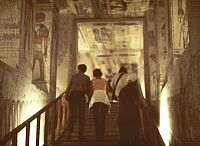
|
According to Alberto Siliotti, "the tomb of Ramses VI presents a sort of treatise on theology in which the fundamental elements are the sun and its daily journey in the world of darkness, from which it emerges perpetually victorious, and the light which is its main emanation" (64). The walls in various halls and chambers constitute a library of important Egyptian texts: the Book of the Gates, the Book of the Caverns, the Book of Amduat, the Book of the Earth, the Book of the Day, the Book of the Night, and the Book of the Dead. |
| |
|
The ceiling of the burial chamber (detail at right) illustrates scenes from the Book of the Day and the Book of the Night. The goddess Nut is shown swallowing the sun in the evening and regenerating it in the morning, thus symbolizing a force of renewal and predicting the rebirth of the dead pharaoh.
|
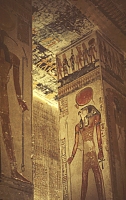
|

|

|
| |
|
The erect deity (left) is also a symbol of rebirth. Details from this scene also show mummies in their chapels (center), presumably brought back to life by the continually reborn sun, and the damned (right) who are beheaded, turned upside down, and painted blood red.
|
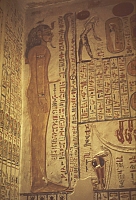
|
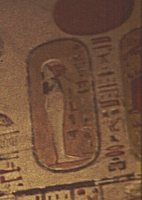
|
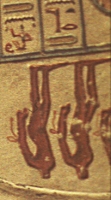
|


 Click here to go to the Egypt Index.
Click here to go to the Egypt Index. Click here to return to index of art historical sites.
Click here to return to index of art historical sites.
 Click here to return to index of artists and architects.
Click here to return to index of artists and architects.
 Click here to return to chronological index.
Click here to return to chronological index.
 Click here to see the home page of Bluffton College.
Click here to see the home page of Bluffton College.
